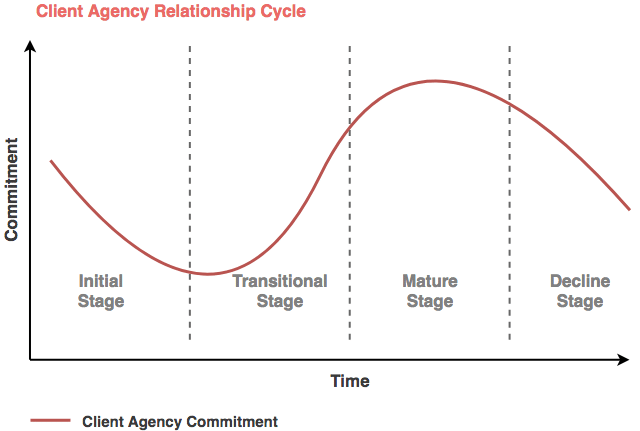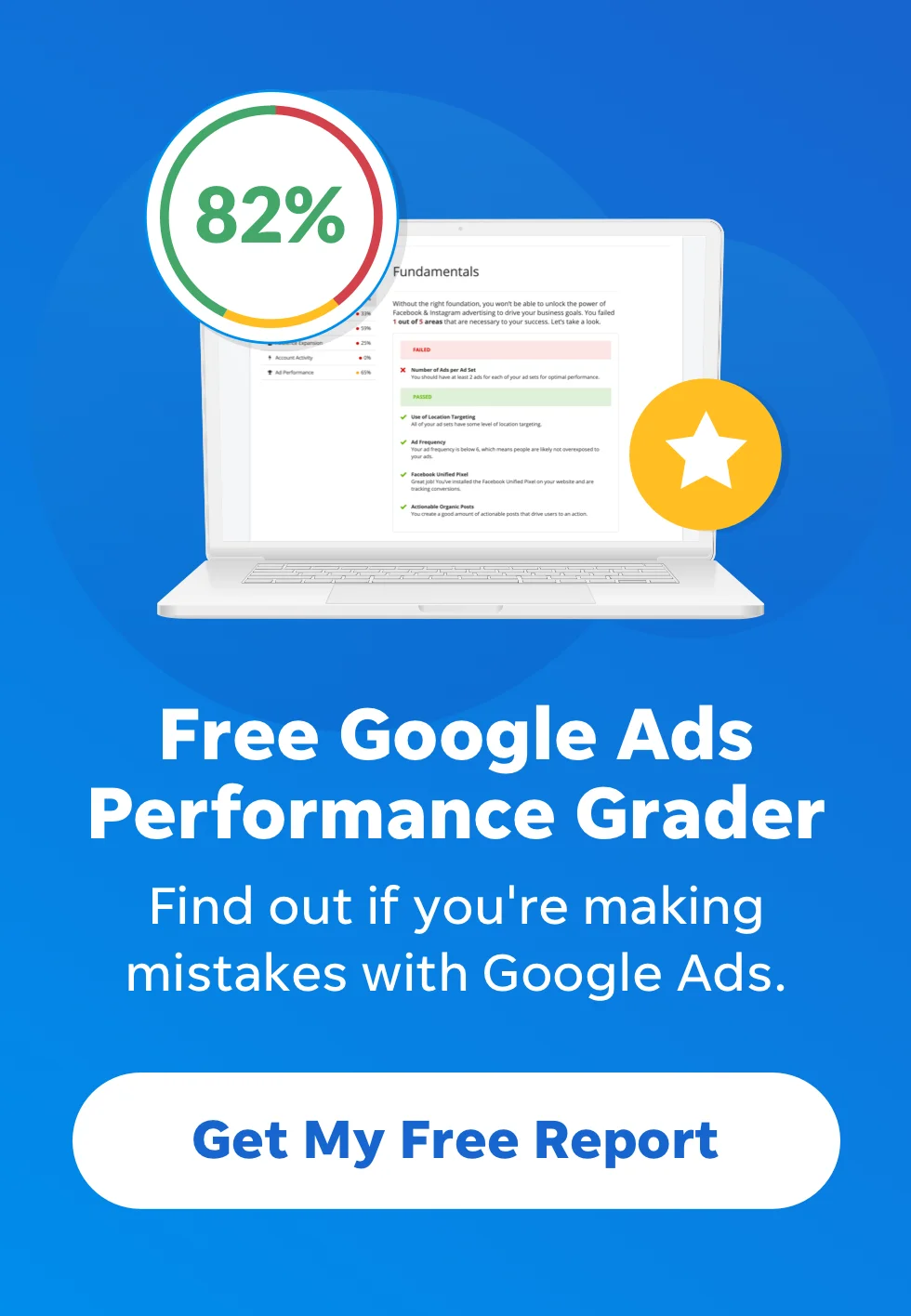
8 Ways to Prioritize Your At-Risk Clients
If you’re an owner of a paid marketing agency or you work for one, you’re more than familiar with the constant balancing act of scheduling your time. Between calls, reporting check-ins, and frequent email exchanges with clients, it’s safe to assume that you have a lot on your plate. Every account manager schedules their time differently, but everyone’s priority list can get convoluted sometimes. Deciding which accounts to dedicate your immediate attention to can be challenging, especially when there is a lot that needs to be done and the expectations are that it’s going to get done now.
Here, I’ll walk you through how to effectively identify at-risk accounts and systematically approach the clients you manage so that your time doesn’t get weighted in the wrong areas.
Remember, prioritizing one account doesn’t mean ignoring another
Before identifying the hierarchy of your account priorities, it’s critical to note that I’m not advising you to neglect any of your accounts or to label them less important than others.
As we all know, every client is a valuable to your business and should be treated as such. My goal here is to help you identify the accounts that need immediate attention and those that are doing well enough to allow you to focus your energy where it’s needed. Every client will (hopefully) go through periods when you don’t want to make many (or any) major changes. When campaigns are performing well, it’s best to leave them be and allow them to succeed. Making too many adjustments can be counterproductive, as most paid media professionals know all too well.
With that out of the way, let’s get started.
Prioritizing at-risk accounts
It’s essential to start by defining what I consider to be “at-risk” accounts. Now, this definition might depend on the variety of clients and accounts you have. To mitigate any confusion, we’ll consider “at-risk” as any account that is:
- Underspending.
- Seeing a high costs per result or recent rise in cost per results.
- Under-pacing towards goals.
- Struggling to drive quality down the funnel.
Plus, any account where the client is uneasy or unsure is at-risk, too. This is a wide net, but it’s likely you have experience at least a couple of these to a varying degree.
The tricky part comes in when you have more than one client who fits under this umbrella of “at-riskiness,” and you need to decide which one demands your immediate attention.
That’s where this list come in.
Here are eight strategies you can use to prioritize at-risk accounts, broken out by the two most important things you need to consider: your client relationships and the account performance.
Factoring in your client relationships
1. Monthly MRR and client lifetime value
In the world of agency work, all clients are not created equal. Regardless of your pricing model, there are always going to be customers who drive more monthly recurring revenue for you and will stick around for the foreseeable future of your business. (By this stage of the paragraph, you might even have a couple of clients in mind that fit into this category.) These clients should always be on your radar for dips in performance or any of the other issues that have mentioned. It’s in your best interest to keep these folks around for as long as possible in order to keep your business running smoothly.
When you have a variety of maintenance work to complete at a given time for a number of clients, don’t forget that you are in fact running a business. Your main priority as a business owner is to ensure your highest paying customers are attended to and satisfied.
Here is an example of a situation that may arise:
Client A: $5,000 MRR, effective marketing and sales funnel, experiencing a sudden dip in performance.
Client B: $1,000 MRR, convoluted marketing operations, experiencing a continued lack of efficiency.
There will be far more complexity to any real situation you encounter—but based on these facts, it’s probably best to direct your immediate attention to Client A. Client B is not less important, but the issues may have a lot more complexity to them and may require more time and less return on investment for your business.
2. Relationship stage with the client
Depending on how long you have been running your agency, you most likely have had some clients for a longer period of time than others. These business relationships have been fostered over many months, over many quarterly updates. Because of this, these clients can be much more forgiving because they know that you are good at what you do and that you know what you’re doing.
On the other end of the spectrum you may have acquired relatively new clients where trust hasn’t been established yet. These points of contact can require a lot more of your attention on a weekly basis, especially in the beginning. Getting new clients off to a good start is paramount to building this trust and increasing their client lifetime value, or CLV, to your business.
When identifying accounts that are “at risk,” you’ll want to push newer clients up the list. Keep in mind that 50% of the job is maintaining healthy business relationships with your customers, so considering your client relationship is a good way to prioritize your time.
Factoring in account performance
The second factor for identifying and prioritizing at-risk accounts has to do with the actual performance metrics themselves. As an account manager, you’re likely aware of the typical red flags that can arise within a paid advertising account. But, for the sake of further explanation, let’s run through the major signals.
3. Spend pacing under or over target
When evaluating accounts that need your immediate attention, it’s important to look at spend pacing first. Many subsequent metrics can either improve or diminish when the spend is increased. Having a good sense of where your accounts are within the month in relation to their spend goal will further influence your decisions down the road.
Let’s say, for example, that a client is under-pacing at a given point early in the month. If the CPA is reasonable and it appears as though the campaigns are performing well the way that budget is allocated, then the common-sense fix would be to simply raise budgets and call it a day. But this becomes increasingly more complex when there are different offer types and goals associated with the overall budget. This may become further complicated when the budget is raised and then your cost per conversion is as well.
If spend is pacing under or over target, you need to prioritize the account, especially when considering the level of complexity is involved with a client’s account and their daily budget.
4. Rising CPAs
Similar to spend, if you notice that CPAs has risen in an account, try to diagnose the root cause of this issue before diving in to make changes. You’ll want to ascertain the impact recent changes and budget pacing play within the account, as well as how long certain ads and campaigns have been running. For example, if the rise in CPA is within paid search campaigns that have been running smoothly for a long period of time, this issue is going to take a bit more detective work (and more of your time) than Facebook or display ads that simply have reached a point of fatigue or diminishing returns within an audience.
5. Worrisome goal pacing
Another factor within this ecosystem is whether or not you are on pace for your clients goals.
Some clients (especially those new to paid advertising) won’t have clearly defined goal targets. It’s important to separate these from the clients you have that do have clearly defined goals as those folks will hold you accountable for pacing behind. Therefore, clients with goals that aren’t pacing correctly should move up on your priority list.
6. Lead quality
A common issue (especially within certain industries) is lead quality. This can either be a quick fix or a multi-layered marketing operations and sales issue. It’s important to know which of those it is before diving in to try to fix the issue. Clients with complex lead funnels and longer sales processes are going to require a lot of time and adjusting with the campaigns that you set up for them.
If the lead quality issue has multiple layers of complexity, then you may want to approach issues with clients that will be quicker adjustments (like spend) and save the lead analysis for when you have an appropriate amount of time to dig into it.
7. Stage of the month
Where you are in the month (or quarter, depending on how your client views reports) should greatly impact the way you approach prioritizing the work you need to get done for each. If you’re nearing the end of the month or quarter and are behind on goal pacing, then that issue should be further towards the top of your list.
8. An automated tool
Prioritizing client accounts is hard—that’s why I wrote this post. There are a ton of different systems you can use to determine where your time is best spent and identify the accounts that need you most. But sometimes clicking through different reports and systems manually isn’t sustainable or effective for you or your agency. If that’s the case, consider using a tool to help.
WordStream’s Advisor for Agencies features Profile Prioritization Ranking, an automatic tool that ranks the connected account in order of importance.
Learn more here!
Remember to prioritize the impact
Here are eight effective ways to prioritize your at-risk client accounts and figure out where you should focus you time first:
- Monthly MRR and client lifetime value
- Relationship stage with client
- Spend pacing under or over target
- Rising CPAs
- Worrisome goal pacing
- Lead quality
- Stage of the month
- An automated tool
The categories listed above should help you generally understand which clients you need to prioritize, which ones are most at risk, and which ones you can plan to get to next. The more client accounts you manage, the more complex this can get. But one thing remains the same: You need to prioritize actions that will make the impact for the most affected accounts. This element is critical and often overlooked. Many account managers will get caught up in smaller time-consuming tasks instead of focusing on those that will have the most impact for the account—or accounts—that really needs it. Try not to do that—use this list or a tool like WordStream Advisor for Agencies to help make sure your client accounts!
Meet The Author
Brett McHale
Brett McHale is the founder of Empiric Marketing, a digital marketing agency dedicated to scaling startups through paid search and social.
See other posts by Brett McHale
More Articles Like This
Comments
Please read our Comment Policy before commenting.













